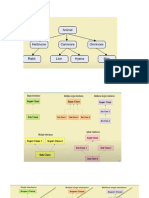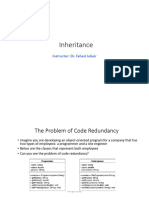0% found this document useful (0 votes)
38 views19 pagesInheritance and Polymorphism Presentation
The document discusses inheritance and polymorphism in Java, highlighting their roles in code reuse and hierarchical classification. It covers concepts such as superclass and subclass relationships, member access rules, the use of the super keyword, and the prevention of inheritance using the final keyword. Additionally, it explains polymorphism, including compile-time and runtime types, dynamic binding, method overriding, and abstract classes.
Uploaded by
sangeethak.rvitmCopyright
© © All Rights Reserved
We take content rights seriously. If you suspect this is your content, claim it here.
Available Formats
Download as PPTX, PDF, TXT or read online on Scribd
0% found this document useful (0 votes)
38 views19 pagesInheritance and Polymorphism Presentation
The document discusses inheritance and polymorphism in Java, highlighting their roles in code reuse and hierarchical classification. It covers concepts such as superclass and subclass relationships, member access rules, the use of the super keyword, and the prevention of inheritance using the final keyword. Additionally, it explains polymorphism, including compile-time and runtime types, dynamic binding, method overriding, and abstract classes.
Uploaded by
sangeethak.rvitmCopyright
© © All Rights Reserved
We take content rights seriously. If you suspect this is your content, claim it here.
Available Formats
Download as PPTX, PDF, TXT or read online on Scribd
/ 19




























































































